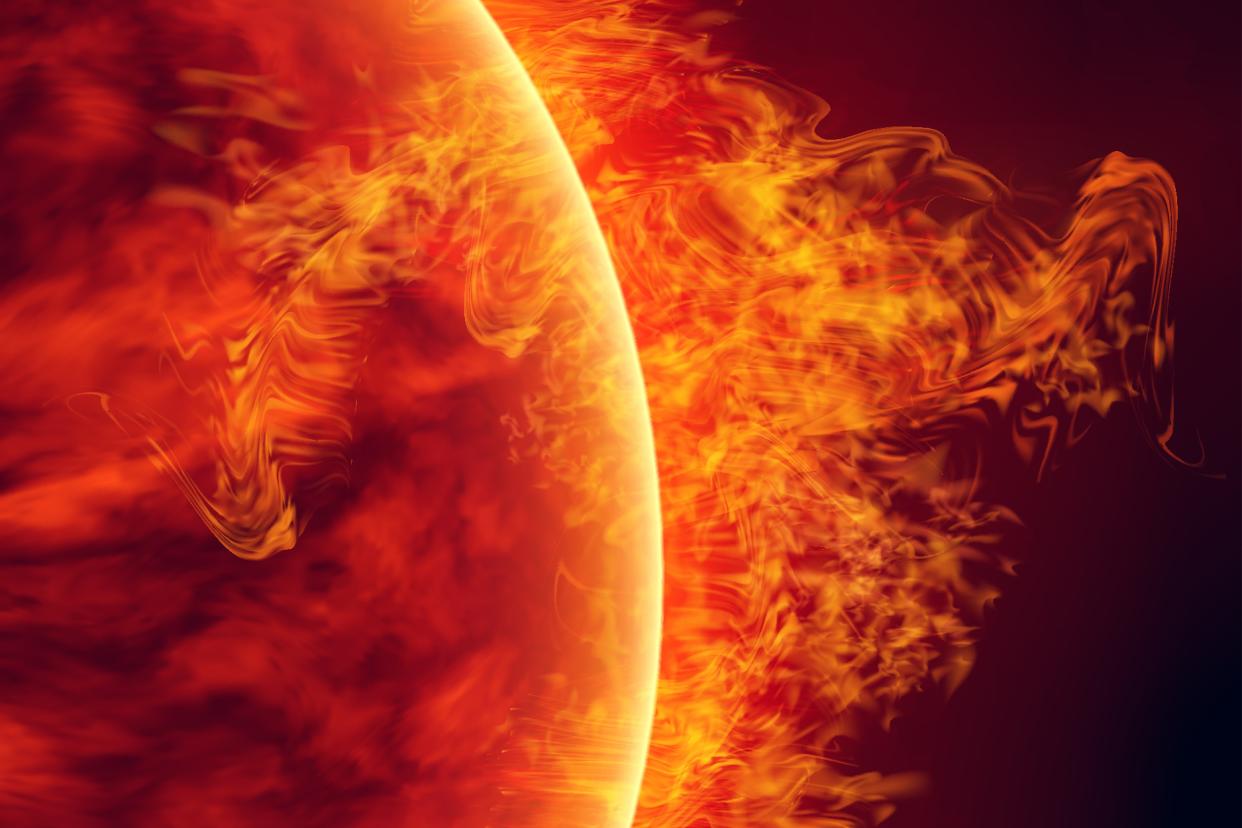Did a solar flare cause the AT&T outage? Here's what we know
After a nationwide outage Thursday left tens of thousands of frustrated AT&T and Verizon customers without wireless cellphone service, many were left wondering what caused the interruption.
Faulty equipment? Hackers? Solar flares?
That last one caught the attention of scientists at the National Oceanic and Atmospheric Administration after two powerful solar flares billions of times stronger than a hydrogen bomb erupted from the sun Wednesday night and early Thursday morning.
Experts say these flares, however, are probably not the reason why cellular service fizzled. Here's what we know about it.
AT&T outage: Nationwide SOS, phone service issues
Did powerful solar flares happen Feb. 22, 2024?
Yes; the sun emitted two strong solar flares Wednesday and Thursday, according to NASA. The first one peaked Wednesday at 6:07 p.m. EST, and the second peaked Thursday at 1:32 a.m. EST. NASA’s Solar Dynamics Observatory captured an image of the event.

What is a solar flare?
A solar flare is an intense burst of radiation associated with sunspots that releases magnetic energy out into space, according to NASA. These giant explosions from the sun send energy, light, and particles throughout the solar system. Flares can last several minutes to several hours. Sometimes this burst of energy can cause geomagnetic storms on Earth.
What is a geomagnetic storm?
A geomagnetic storm is a major disturbance of Earth's magnetosphere, according to the National Oceanic and Atmospheric Administration. It's what happens if the exchange of energy from a solar flare reaches the space surrounding Earth through solar wind.
What happens to Earth during a geomagnetic storm?
Well, for one thing, when these storms heat Earth's upper atmosphere they can cause beautiful auroras. That's why the northern lights — the aurora borealis — is visible to stargazers in some parts of the U.S after a "moderate" geomagnetic storm. Scientists say particles from the solar flare get caught within the Earth's magnetosphere, causing the glowing red and green colors we see in the night sky.

Are geomagnetic storms dangerous to humans?
No, not directly. However, these storms can disrupt navigation systems, radio waves and power grids.
Do solar flares get storm ratings like hurricanes?
Yes, just like hurricanes, solar flares are classified by their strength. The smallest are considered A and B-class, according to NASA, followed by C, M and X-class, which are the largest. Here's a breakdown:
X-class: strongest
M-class
C-class
B-class
A-class: weakest
Each letter class represents a tenfold increase in energy output, NASA says. That means an X-class is 10 times stronger than M-class, 100 times stronger than a C-class, and so on.
Each class of solar flare is also graded on number scale, from 1 to 9, to determine its exact impact. There's an exception with X-class flares, however, which can go higher than 9. One of the most powerful solar flares on record happened in 2003, according to NASA, which overloaded the sensors measuring it. Scientists later estimated that flare to be about X45.

What is an X-class solar flare?
X-class flares are the biggest explosions from the sun. They can be 10 times the size of Earth, according to NASA, and produce as much energy as a billion hydrogen bombs.
When solar flares get that strong, they have the potential to create long lasting radiation storms, which can harm satellites and give some airline passengers small doses of radiation. They also have the possibility of creating global transmission problems and world-wide blackouts.
How strong were the recent solar flares?
The two solar flares that struck the Earth on Wednesday and Thursday were X-class, the most intense, according to NASA. These two flares were classified as X1.8 and X1.7. These types of flares can send out a coronal mass ejection – sun material – into space, which can interfere with communication and navigation systems on Earth, along with power grids, depending on the flare's strength.
Did solar flares cause the AT&T and Verizon outage? Unlikely, say experts
After both solar flares, NOAA issued a statement saying, "No apparent CMEs resulting from these events have been observed as of the time of this writing, but can not be ruled out." Hours later, the agency weighed in on social media, saying the AT&T and Verizon outage was unlikely related to the flares.
"While solar flares can affect communication systems, radar, and the Global Positioning System, based on the intensity of the eruption and associated phenomena, it is highly unlikely that these flares contributed to the widely reported cellular network outages," read a statement from NOAA's Space Weather Prediction Center.
What caused the outage?
As of Thursday afternoon, AT&T has not shared why the outage may have started.
ABC News reported that federal officials found "no indications of malicious activity," quoting from a confidential memo they had obtained. The memo reportedly reflected an assessment by the U.S. Cybersecurity and Infrastructure Security Agency, a federal agency that monitors cyber threats.
The cause of the outage is still being investigated.
Solar flares erupted 21-22 Feb. Seen here from GOES-16; an R3 flare in the NE, followed by an R1 from beyond the SE limb, and another R3 event from the NE again. The reported cellular service outage is unlikely to be related to these events: https://t.co/KMDjM2zIyqpic.twitter.com/MCXWAbOWWn
— NOAA Space Weather (@NWSSWPC) February 22, 2024
John Tufts covers trending news for the Indianapolis Star. Send him a news tip at JTufts@Gannett.com. Jordan Mendoza, Christopher Cann and Gabe Hauari contributed to this article.
This article originally appeared on Indianapolis Star: AT&T outage: Did a solar flare cause it?
